VIP member
Ningxia Hui Autonomous Constant Temperature and Humidity Test Chamber
Ningxia Hui Autonomous Constant Temperature and Humidity Test Chamber, also known as Constant Temperature and Humidity Test Machine, Constant Temperat
Product details
Ningxia Hui Autonomous Constant Temperature and Humidity Test Chamber
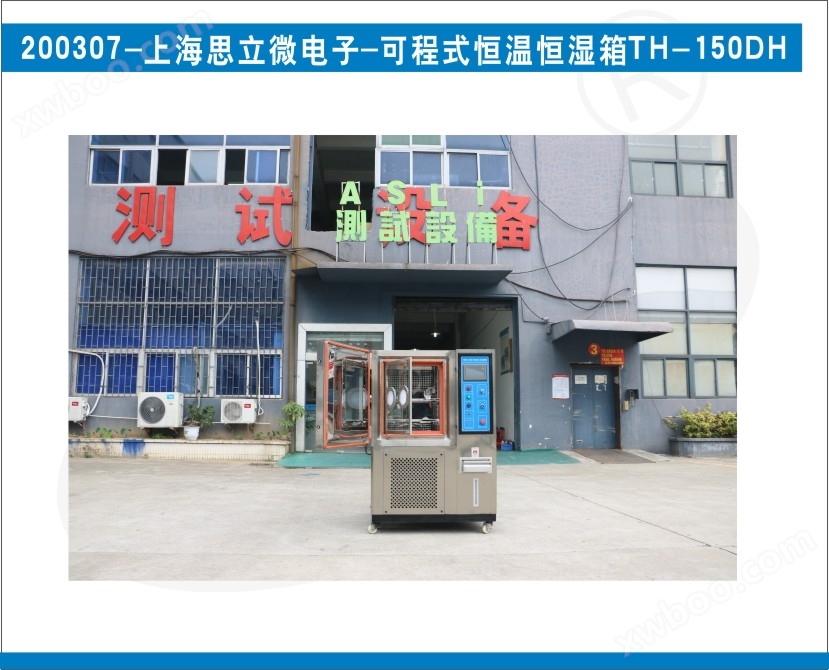
Also known as constant temperature and humidity testing machine, constant temperature and humidity test chamber, programmable wet heat alternating test chamber, constant temperature machine or constant temperature and humidity chamber, it is an equipment used to test the performance of materials in various environments and test the heat resistance, cold resistance, dry resistance, and moisture resistance of various materials. Suitable for quality testing of electronic, electrical, mobile phone, communication, instrument, vehicle, plastic products, metal, food, chemical, building materials, medical, aerospace and other products. Compliant with standards: GB/T5170.5-2008, GB/T10586-2006, GB/T2423.1-2008 Test A, GB/T2423.2-2008 Test B, GB/T2423.3-2006 Test Ca, GB/T2423.4-2008 Test
Ningxia Hui Autonomous Constant Temperature and Humidity Test Chamber - Specifications/SPEC:
| Model | TH-80 (A~F) |
TH-150 (A~F) |
TH-225 (A~F) |
TH-408 (A~F) |
TH-800 (A~F) |
TH-1000 (A~F) |
|
| Internal dimensions W × H × D (cm) | 40×50×40 | 50×60×50 | 60×75×50 | 60×85×80 | 100×100×80 | 100×100×100 | |
| External dimensions W × H × D (cm) | 120×165×115 | 130×170×125 | 140×185×130 | 165×195×155 | 185×200×175 | 190×210×185 | |
| temperature range | Low temperature: (A:+25 ℃; B:0℃; C:-20℃; D:-40℃; E:-60℃; F: -70 ℃)/High temperature: 100 ℃ (150 ℃) | ||||||
| Non standard customization according to customer requirements, manufactured by Aisili | |||||||
| Humidity range | 20%—98% R.H.(10%~98%R.H); (5%~98% R.H is a special selection condition) | ||||||
| Temperature and humidity analysis accuracy/distribution accuracy | 0.1℃; 0.1%R.H./±2.0℃; ±3.0%R.H. | ||||||
| Temperature and humidity control accuracy | ±0.5℃; ±2.5%R.H. | ||||||
| Heating/cooling time | Raise the temperature by about 4.0 ℃/minute; Cooling down by about 1.0 ℃/minute | ||||||
| Internal and external materials | The material of the inner and outer boxes is SUS316 # stainless steel plate | ||||||
| Insulation material | High temperature resistant and high-density vinyl chloride acetate foam insulator material | ||||||
| Cooling system | Air cooled/single-stage compressor (-20 ℃); Double stage compressor (-40 ℃ -70 ℃) | ||||||
| Safety protection device | Non fuse switch, compressor overload protection, refrigerant high and low voltage protection, over humidity and over temperature protection, fuse, fault warning system, water shortage alarm protection | ||||||
| Accessories | Built in glass door for operation hole (optional), recorder (optional), observation window, 50mm test hole, PL box light, partition, dry and wet ball gauze, casters, horizontal tripod | ||||||
| Power Supply | AC220V ,50/60Hz & 1∮ , AC380V ,50/60Hz 3∮ | ||||||
| Weight (approximately) | 150KG | 180KG | 250KG | 350KG | 500KG | 520KG | |
Ningxia Hui Autonomous Constant Temperature and Humidity Test Chamber - Temperature and Humidity Curve Diagram:

Ningxia Hui Autonomous Constant Temperature and Humidity Test Chamber - Definition of Terms
The constant temperature and humidity test chamber, also known as the "Programmable Constant Temperature and Humidity Test Chamber FR-1204 Constant Temperature and Humidity Chamber", belongs to the same series as the "High and Low Temperature Alternating Damp Heat Test Chamber/GDS-100". It is a testing equipment used in aviation, automotive, home appliances, scientific research and other fields to test and determine the parameters and performance of electrical, electronic and other products and materials after high temperature, low temperature, alternating humidity or constant temperature environmental changes.Ningxia Hui Autonomous Constant Temperature and Humidity Test Chamber - Model Differentiation
The constant temperature and humidity test chamber can be divided into "desktop" and "vertical" types, with the main difference being the temperature and humidity that can be achieved, resulting in different temperatures. The vertical type can be used for low temperature and drying below room temperature, while the desktop type can only be used for temperature and high humidity above room temperature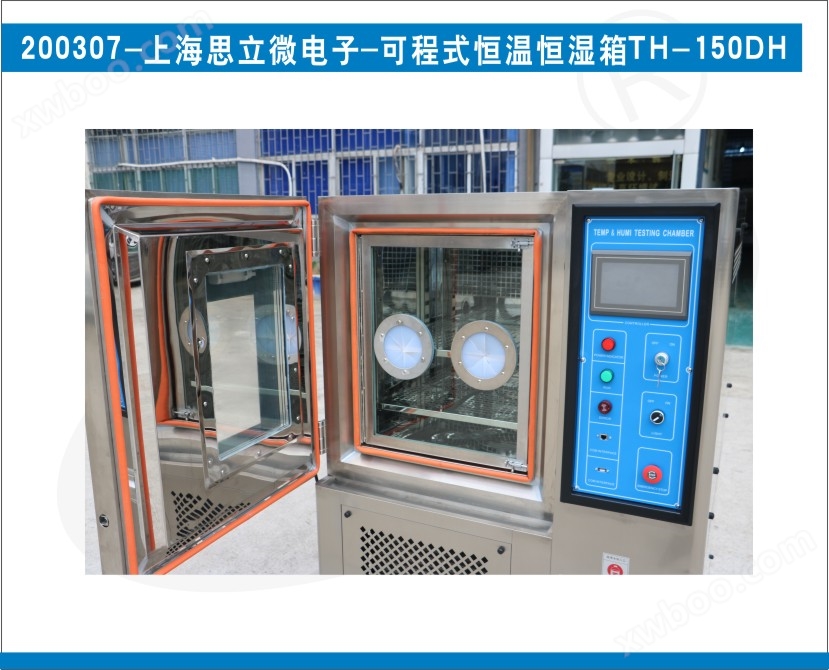
Ningxia Hui Autonomous Constant Temperature and Humidity Test Chamber - Working Principle
The constant temperature and humidity test chamber consists of two parts: temperature control (heating, cooling) and humidification. By installing a rotating fan at the top of the box, air is discharged into the box to achieve gas circulation and balance the temperature and humidity inside the box. The data collected by the temperature and humidity sensors built into the box is transmitted to the temperature and humidity controller (micro information processor) for editing and processing, and temperature and humidity control instructions are issued. This is achieved through the joint operation of the air heating unit, condenser tube, and water tank heating and evaporation unit.The temperature regulation of a constant temperature and humidity box is achieved by using a built-in temperature sensor to collect data, which is then controlled by a temperature controller (miniature information processor). The air heating unit is connected to increase the temperature or the refrigeration solenoid valve is adjusted to lower the temperature inside the box, in order to achieve the desired temperature for control. The humidity regulation of a constant temperature and humidity chamber is achieved by using a built-in humidity sensor to collect data, which is then controlled by a humidity controller (miniature information processor). The heating element of the water tank is connected, and the humidity inside the chamber is increased by evaporating the water in the tank or adjusting the cooling solenoid valve to achieve dehumidification, in order to control the required humidity.
The constant temperature and humidity chamber is equipped with multiple protective measures; The temperature system is equipped with an over temperature protector under safe allowable temperature conditions, and the air heating element can automatically power off when the rotating fan stops; The humidification system can stop supplying power as the water level in the humidification tank decreases; The refrigeration system also stops working as the temperature of the box rises (over 40 ℃) or the humidity increases.
Ningxia Hui Autonomous Constant Temperature and Humidity Test Chamber - System Composition
A constant humidity and temperature chamber refers to a test chamber that can simultaneously apply temperature and humidity stress. With the need for industrial product development in China, in recent years, China has introduced a large number of testing systems from abroad, which have played an important role in the development and standardization of Chinese industrial products. However, due to their complexity, many problems have arisen during the operation of the testing chamber, and these problems cannot be solved in a timely manner, greatly extending the testing cycle and affecting the development of products. The reason for these phenomena is a lack of understanding of the working principle of comprehensive experiments. For this purpose, we have provided a brief explanation of the basic working principle of the test box and introduced how to analyze and diagnose faults in the comprehensive test box testing equipment.The constant temperature and humidity chamber consists of a refrigeration system, a heating system, a control system, a temperature system, an air circulation system, and a sensor system. The above systems belong to two major aspects: electrical and mechanical refrigeration.

Ningxia Hui Autonomous Constant Temperature and Humidity Test Chamber - Structural Introduction
Construction characteristics
In terms of box structure, the constant temperature and humidity test box is processed and formed by CNC machine tools, with a beautiful and novel shape, and adopts a non reactive handle for easy operation. The studio is made of imported stainless steel mirror panels, and the outer shell of the box is coated with A3 steel plate. The ultra-fine insulation cotton is filled between the outside of the box and the tank, which has a good temperature insulation effect, effectively reducing the temperature fluctuation rate in the test box, and combined with the tight sealing of anti-aging silicone rubber sealing strip, so that the box has no fog leakage. Due to the harsh environment inside the test chamber, in order to observe the situation clearly, Wuhan Shangce uses multi-layer tempered glass to make the observation window, and sets up separate lighting and fog brushes in the observation window to maintain a good observation field and monitor the test situation at any time. Of course, in order to collect experimental data, the box is specially equipped with a test hole with a diameter of 50mm, which can be connected to a recorder, printer, and computer.Control characteristics
The control system of the test chamber can be said to be the heart of the entire equipment, in charge of cooling, heating, humidity control, circulation, control and other major powers.In terms of refrigeration, the compressor is imported from Germany. The refrigeration system consists of a high temperature section and a low temperature section, each of which is a relatively independent refrigeration system. The evaporation of refrigerant in the high temperature section absorbs heat from the refrigerant in the low temperature section and vaporizes; The evaporation of the low-temperature refrigerant absorbs heat from the object being cooled (the air inside the testing machine) to obtain cooling capacity. The high temperature and low temperature sections are connected by an evaporative condenser, which serves as both the condenser for the high temperature section and the condenser for the low temperature section.
The heating system adopts a completely independent nickel chromium alloy electric heating type, with high resistivity, low temperature coefficient of resistance, small deformation at high temperatures, and is not easily brittle. The self heating temperature can reach 1000-1500 ℃, and the service life is long.
Humidification is a part of the constant temperature and humidity test chamber that is different from the high and low temperature test chamber. The constant temperature and humidity test chamber adopts an external isolated, all stainless steel boiler type shallow surface evaporative humidifier. The dehumidification method adopts mechanical refrigeration dehumidification, which cools the air below the dew point temperature, causing water vapor with a moisture content greater than saturation to condense and precipitate, thus reducing humidity.
Supply air circulation system: The air circulation system consists of a temperature resistant and low-noise air conditioning motor and a multi blade centrifugal fan. It provides the circulation of air inside the testing machine.
The control system is the core of the comprehensive test chamber, which determines important indicators such as the heating rate and accuracy of the testing machine. Most of the controllers of the testing machine use PID control, and there are also a few that use a combination of PID and fuzzy control. Due to the fact that control systems are basically within the scope of software, and this part generally does not encounter any problems during use.
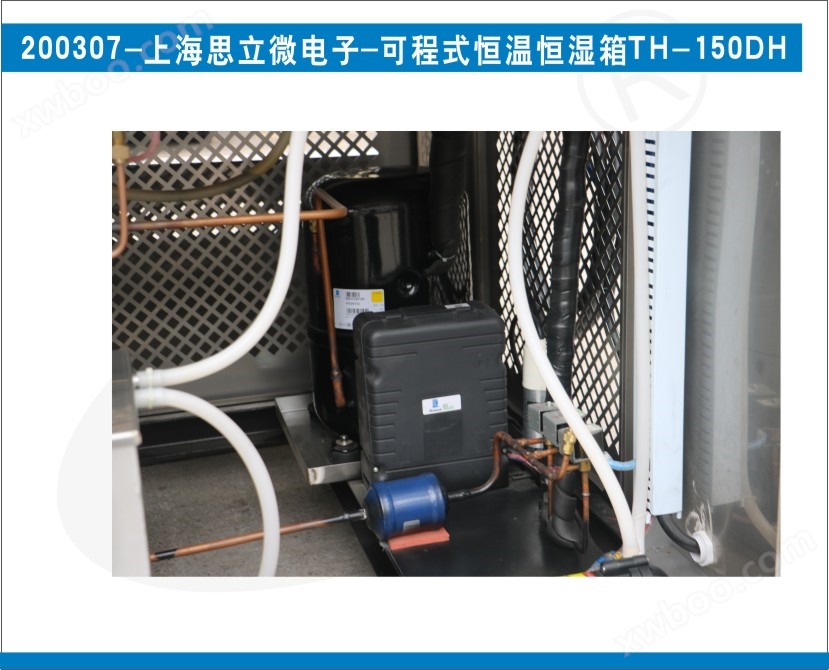
Ningxia Hui Autonomous Constant Temperature and Humidity Test Chamber - Meets Standards
GB11158 Technical Conditions for High Temperature Test Chamber2. GB10589-89 Technical Conditions for Low Temperature Test Chamber
GB10592-89 Technical Conditions for High and Low Temperature Test Chamber
GB/T10586-89 Technical Conditions for Damp Heat Test Chamber
5. GB/T2423.1-2008 Low temperature test chamber test method
GB/T2423.2-2008 High temperature test chamber test method
GB/T2423.3-2006 Damp Heat Test Chamber Test Method
GB/T2423.4-2008 Alternating Damp Heat Test Method
9. GB/T2423.22-2002 Temperature Change Test Method
⒑ IEC60068-2-1.1990 Low temperature test chamber test method
⒒ IEC60068-2.2.1974 High temperature test chamber test method
GJB150.3 High Temperature Test
GJB150.4 Low temperature test
GJB150.9 Damp Heat Test
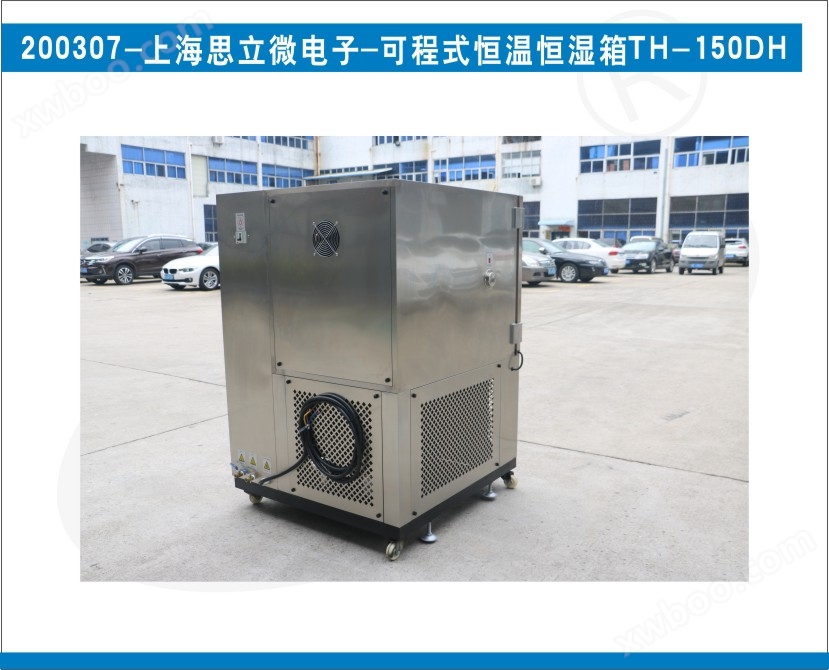
Ningxia Hui Autonomous Constant Temperature and Humidity Test Chamber - Prohibited Items
(1) Explosive materials:
1. Nitroglycerin (ethylene glycol dinitrate), nitroglycerin (glycerol trinitrate), nitrocellulose, and other explosive nitrates.2. Trinitrobenzene, trinitrotoluene, trinitrophenol (picric acid), and other explosive nitro compounds.
3. Acetic acid, methyl ethyl ketone peroxide, benzoyl peroxide, and other organic peroxides.
(2) Combustible materials:
1. Spontaneous combustion substances: metals: 'lithium', 'potassium', 'sodium', yellow phosphorus, phosphorus sulfide, red phosphorus. Sailulu type: calcium carbide (calcium carbide), phosphated lime, magnesium powder, aluminum powder, sodium bisulfite.2. Oxide properties:
(1) Potassium chlorate, sodium chlorate, ammonium chlorate, and other chlorates.
(2) Potassium peroxide, sodium peroxide, ammonium peroxide, and other peroxides.
(3) Potassium peroxide, sodium peroxide, barium peroxide, and other inorganic peroxides.
(4) Potassium nitrate, sodium nitrate, and other nitrates.
(5) Potassium hypochlorite and other hypochlorite salts.
(6) Sodium chlorite and other chlorites.
(3) Flammable materials:
(1) Ether, gasoline, acetaldehyde, propylene oxide, carbon disulfide, and other substances with ignition points below -30 ℃.(2) Ordinary ethane, ethylene oxide, acetone, benzene, methyl ethyl ketone, and other substances with ignition points above -30 ℃ but below 0 ℃.
(3) Methanol, ethanol, dimethyl benzene, ethyl acetate, and other substances with ignition points above 0 ℃ but below 30 ℃.
(4) Kerosene, gasoline, turpentine, isoamyl alcohol, vinegar, and other substances with ignition points above 30 ℃ but below 65 ℃.
(4) Combustible gases: hydrogen, acetylene, ethylene, methane, ethane, propane, butane, and other gases that may burn at 1 atmosphere pressure at a temperature of 15 ℃.
|
phenomenon
|
reason
|
processing method
|
|
1. No power indication
|
1. The power cord is not properly plugged in or disconnected
2. Open circuit of fuse
|
1. Plug in the power plug and check the power cord
2. Replace the fuse
|
|
2. The temperature inside the box does not rise
|
1. Set the temperature too low;
2. The temperature controller is damaged
3. The electric heater is damaged
|
1. Adjust the set temperature
2. Replace the temperature controller
3. Replace the electric heater
|
|
3. Poor or no cooling effect
|
1. Refrigerant leakage
2. Axial flow fan failure
|
1. Please contact the dealer or manufacturer
|
|
4. The compressor does not work after being powered on
|
1. Unstable power supply voltage
2. Compressor damage
|
1. Check the voltage strength
2. Please contact the dealer or manufacturer
|
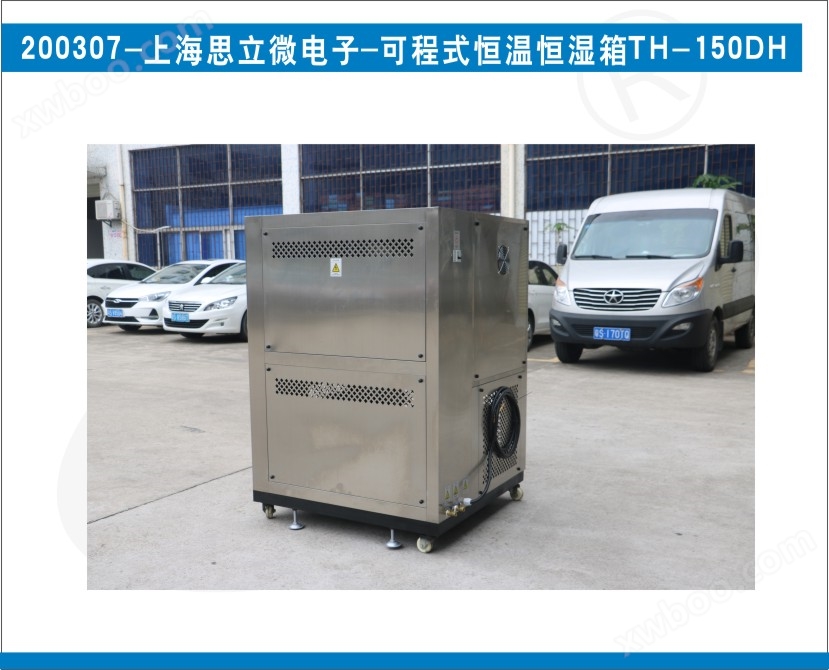
Ningxia Hui Autonomous Constant Temperature and Humidity Test Chamber - Selection Principles
reproducibility
It is impossible to fully reproduce the environmental conditions that exist in nature in the laboratory. However, within a certain tolerance range, people can accurately and approximately simulate the external environmental conditions that engineering products undergo during use, storage, transportation, and other processes. This statement can be summarized in engineering language as "the environmental conditions (including platform environment) created by the testing equipment around the tested product should meet the requirements of the environmental conditions and their tolerances specified in the product testing specifications. The temperature chamber used for military product testing should not only meet the high and low temperature test values and test times specified for different types of products in the national military standards GJB150.3-86 and GJB150.4-86, but also meet the requirements for temperature field uniformity and temperature control accuracy in the test specifications. Only in this way can the reproducibility of environmental conditions be ensured in environmental testing.repeatability
An environmental testing equipment may be used for multiple tests of the same type of product, and a tested engineering product may also be tested in different environmental testing equipment. In order to ensure the comparability of test results obtained for the same product under the same environmental testing conditions specified in the testing specifications, it is necessary to require the environmental conditions provided by the environmental testing equipment to be reproducible. This means that the stress levels (such as thermal stress, vibration stress, electrical stress, etc.) applied by environmental testing equipment to the tested product are consistent with the requirements of the same testing specification.The repeatability of environmental conditions provided by environmental testing equipment is guaranteed by the national metrological verification department after passing the verification according to the verification regulations formulated by the national technical supervision agency. For this purpose, it is required that the environmental testing equipment can meet the requirements of various technical indicators and accuracy indicators in the calibration regulations, and the usage time should not exceed the time limit specified in the calibration cycle. If a very common electric vibration table is used, in addition to meeting technical indicators such as excitation force, frequency range, and load capacity, it must also meet the requirements of precision indicators such as lateral vibration ratio, table acceleration uniformity, harmonic distortion, etc. specified in the calibration regulations. Moreover, the service life after each calibration is two years, and after two years, it must be re calibrated and qualified before it can be put into use.
Measurability
The environmental conditions provided by any environmental testing equipment must be observable and controllable, not only to limit the environmental parameters within a certain tolerance range and ensure the reproducibility and repeatability requirements of the test conditions, but also from the perspective of product testing safety, in order to prevent damage to the tested product and unnecessary losses caused by uncontrolled environmental conditions. The accuracy of parameter testing in various test specifications should not be less than one-third of the allowable error under test conditions.
Exclusivity
Each environmental or reliability test conducted has strict regulations on the category, magnitude, and tolerance of environmental factors, and excludes the infiltration of non test required environmental factors, in order to provide accurate basis for judging and analyzing product failure and failure modes during or after the test. Therefore, it is required that environmental testing equipment not only provide the specified environmental conditions, but also not allow additional environmental stress interference to the tested product. As defined in the verification regulations for electric vibration tables, the table leakage magnetic flux, acceleration signal-to-noise ratio, and total root mean square value ratio of in band and out of band acceleration. The accuracy indicators such as random signal inspection and harmonic distortion are all established to ensure the conditional conditions of environmental testing.
Safety and reliability
Environmental testing, especially reliability testing, has a long testing cycle and sometimes targets high-value military products. During the testing process, testing personnel often need to operate or test around the site. Therefore, environmental testing equipment must have the characteristics of safe operation, convenient operation, reliable use, and long service life to ensure the normal progress of the test itself. The various protection, alarm measures, and safety interlocking devices of the testing equipment should be complete and reliable to ensure the safety and reliability of the testing personnel, the tested products, and the testing equipment itself.
Ningxia Hui Autonomous Constant Temperature and Humidity Test Chamber - Humidification and Dehumidification
There are many methods to represent humidity, and for testing equipment, the concept of relative humidity is usually used to describe humidity. The definition of relative humidity refers to the ratio of the partial pressure of water vapor in the air to the saturated vapor pressure of water at that temperature, expressed as a percentage. From the properties of water vapor saturation pressure, it can be seen that the saturation pressure of water vapor is only a function of temperature and is independent of the air pressure that water vapor can handle. People have sought to express the relationship between water vapor saturation pressure and temperature through a large number of experiments and sorting, among which the Goughley formula has been widely used in engineering and metrology. It is used by the meteorological department to compile a humidity calculation table.The process of humidification is actually to increase the partial pressure of water vapor. The humidification method is to spray water onto the wall of the test chamber and control the saturation pressure of the water surface by controlling the water temperature. The water on the surface of the box wall forms a larger surface, and on this surface, water vapor pressure is added to the box through diffusion to increase the relative humidity in the test box. This method appeared in the 1950s. Due to the fact that humidity control at that time was mainly achieved through simple on/off adjustment using mercury contact type conductivity meters, the adaptability to controlling the temperature of hot water tanks with large hysteresis was poor. Therefore, the transition process of control was long and could not meet the high humidity requirements of alternating humidity and heat. More importantly, when spraying the box wall, water droplets inevitably fell on the test sample, causing varying degrees of contamination. There are also certain requirements for the drainage inside the box. This method was quickly replaced by steam humidification and shallow water plate humidification. However, this method still has some advantages. Although its control transition process is relatively long, the humidity fluctuation is small after the system stabilizes, making it more suitable for conducting constant humidity and heat tests. In addition, during the humidification process, the water vapor does not overheat and does not increase the additional heat in the system. Also, when the spray water temperature is controlled to be lower than the key temperature required for the test, the spray water has a dehumidification effect.
As the wet heat test develops from constant wet heat to alternating wet heat, it requires a fast humidification reaction ability. When spray humidification can no longer meet the requirements, steam humidification and shallow water plate humidification methods are widely adopted and developed.
Ningxia Hui Autonomous Constant Temperature and Humidity Test Chamber - Installation Site
In order to facilitate heat dissipation and maintenance of the box, the installation location of this equipment must meet the following conditions:1. The distance between adjacent walls or objects is 300mm
2. In order to stably utilize the functions and performance of the test chamber, a place with a perennial temperature of 15-35 ℃ and a relative humidity greater than 85% should be selected.
3. The environmental temperature of the installation site should avoid sudden changes.
4. It should be installed on a horizontal surface (a level should be used to confirm the level on the ground during installation).
5. It should be installed in a place without direct sunlight.
6. It should be installed in a well ventilated area.
7. It should be installed in a place far away from combustibles, explosives, and high-temperature heat sources.
8. It should be installed in a place with less dust.
9. Install as close to the power supply as possible.
Ningxia Hui Autonomous Constant Temperature and Humidity Test Chamber - Precautions
To avoid machine malfunctions in the constant temperature and humidity test chamber, please provide a power supply within the rated voltage range.To prevent electric shock or misoperation and malfunction, please do not connect the power supply before installation and wiring are completed.
3. This product is not explosion-proof, please do not use the constant temperature and humidity machine in environments with flammable or explosive gases.
4. Please try not to open the test chamber door during instrument operation. Opening it at high temperatures may cause burns to the operators, while opening it at low temperatures may cause early frostbite to the workers and may also cause the evaporator to freeze, affecting the cooling effect. If you must open it, please take certain protective measures,
5. It is prohibited to dismantle, process, modify or repair the constant temperature and humidity machine without authorization, otherwise there is a risk of abnormal operation, electric shock or fire.
6. The ventilation holes of the body should be kept unobstructed to prevent malfunctions, abnormal movements, reduced lifespan, and fires.
7. If the machine is found to be damaged or deformed during unboxing, please do not use it.
8. When installing and setting up the machine, be careful not to let dust, wire ends, iron filings, or other things enter, otherwise incorrect actions or malfunctions may occur.
9. The wiring must be correct and grounded. Not grounding may cause electric shock, incorrect operation accidents, abnormal display, or significant measurement errors.
10. Regularly check the terminal screws and fixing brackets, please do not use them when they are loose.
During the operation of the instrument, the power input terminal cover must be installed on the terminal board to prevent electric shock.
Before modifying settings, outputting signals, starting, stopping, and other operations during the operation of the instrument, safety should be fully considered. Incorrect operations may cause damage or malfunction to the working equipment.
13. Please use a dry cloth to wipe the instrument, do not use alcohol, gasoline, or other organic solvents, and do not splash water on the instrument. If the instrument is immersed in water, please stop using it immediately, otherwise there is a risk of electric leakage, shock, or fire.
14. The internal components of the instrument have a certain lifespan. To ensure the safe and continuous use of this instrument, please perform regular maintenance and upkeep. When scrapping this product, please dispose of it as industrial waste.
Ningxia Hui Autonomous Constant Temperature and Humidity Test Chamber - Operation
Through three interconnected systems: refrigerant circulation system, air circulation system, and electrical self-control system.1、 Constant temperature and humidity test chamber refrigerant circulation system: The liquid refrigerant in the evaporator absorbs heat from the air (the air is cooled and dehumidified) and begins to evaporate, forming a certain temperature difference between the refrigerant and the air. The liquid refrigerant also completely evaporates into a gaseous state, which is then sucked in and compressed by the compressor (pressure and temperature increase). The gaseous refrigerant absorbs heat through the condenser (air-cooled/water-cooled) and condenses into a liquid. After being throttled by an expansion valve (or capillary tube), it becomes a low-temperature and low-pressure refrigerant that enters the evaporator, completing the refrigerant circulation process.
2、 Constant temperature and humidity test chamber air environment system: The fan is responsible for drawing in air from the return air outlet. The air passes through the evaporator (for cooling and dehumidification), humidifier, and electric heater (for heating) before being sent to the user's desired space through the air supply outlet. The air sent out mixes with the air in the space and returns to the return air outlet.
3、 Constant temperature and humidity test chamber electrical self-control system:
Including power supply and automatic control parts.
The power supply is automatically controlled by contactors to supply power to compressors, fans, electric heaters, humidifiers, etc. It is further divided into temperature and humidity control and fault protection parts: temperature and humidity control is achieved by comparing the temperature and humidity of the return air with the user set temperature and humidity through a temperature and humidity controller, automatically running the compressor (cooling, dehumidification), humidifier, electric heating (heating) and other components to achieve automatic control of constant temperature and humidity.
Ningxia Hui Autonomous Constant Temperature and Humidity Test Chamber - Maintenance Method
The constant temperature and humidity test chamber has been widely used in the fields of electronics industry, defense technology, chemical engineering, mechanical manufacturing, aerospace, etc. The constant temperature and humidity test chamber produced by it adopts a German style design.So how is the constant temperature and humidity test chamber maintained and cleaned in daily work?
1. Cleaning and maintenance of the inside and outside of the constant temperature and humidity test chamber
(1) The constant temperature and humidity test chamber should be cleaned of internal impurities before operation.(2) Clean the distribution room at least once a year
Above, when cleaning, you can use a vacuum cleaner to remove indoor dust.
(3) The exterior of the box should also be cleaned at least once a year, by wiping it with soapy water before cleaning.
2. Inspection and maintenance of humidifiers in constant temperature and humidity test chambers. The water stored in the humidifier should be replaced once a month to ensure clean water quality. The humidification water tray should be cleaned once a month to ensure smooth water flow.
3. During the operation of the constant temperature and humidity test chamber, the set high value of the over temperature protection should be increased by 20 ℃~30 ℃. When the temperature inside the test chamber rises to the set point for over temperature protection, the power supply to the heater stops, and the 'OVERHEAT' over temperature warning light lights up but the fan still runs. If it runs for a long time without supervision, please make sure to check whether the over temperature protector is properly set before operation [the wet bulb over temperature protector is set to 120 ℃].
4. The dust removal of the condenser in the constant temperature and humidity test chamber should be carried out regularly and monthly. The condenser should be cleaned with a vacuum cleaner to remove the dust attached to the condenser cooling mesh or sprayed with high-pressure air to remove the dust.
5. Replacement of wet bulb test cloth in constant temperature and humidity test chamber. When the surface of the test cloth is not clean or hardened, or after completing temperature control, the test cloth must be replaced before continuing with temperature and humidity bulb control. The test cloth should be replaced about every three months. When replacing, the temperature measuring body should be wiped with a clean cloth. When replacing the new test cloth, it should be cleaned first.
6. Check and adjust the water level of the wet bulb in the constant temperature and humidity test chamber. The water level in the water tank should not be too high, causing water to overflow from the tank or too low, resulting in abnormal water absorption of the wet bulb test cloth, which affects the accuracy of the wet bulb. The water level should be kept about six tenths full. The adjustment of the water level in the water tank can adjust the height of the water tank.
7. If the constant temperature and humidity test chamber is not in use for a long time, the equipment should be powered on regularly every month for at least one hour.
Online inquiry

